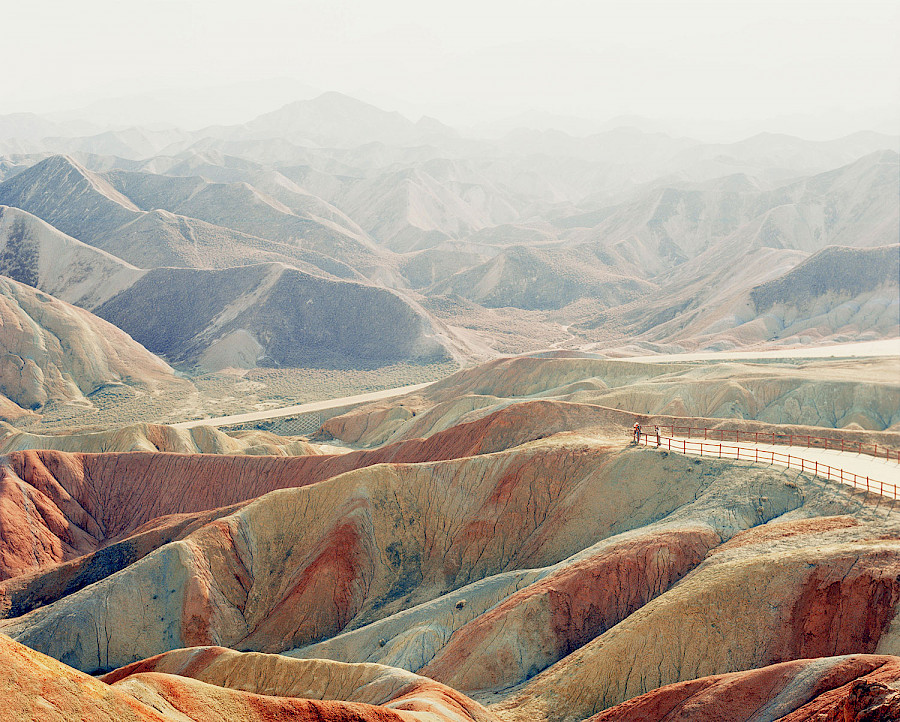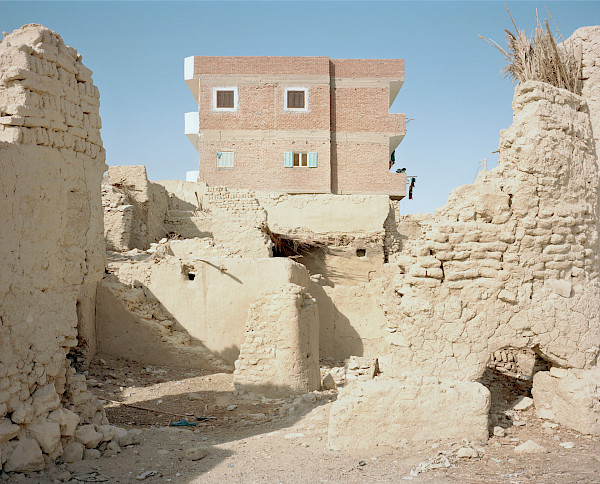

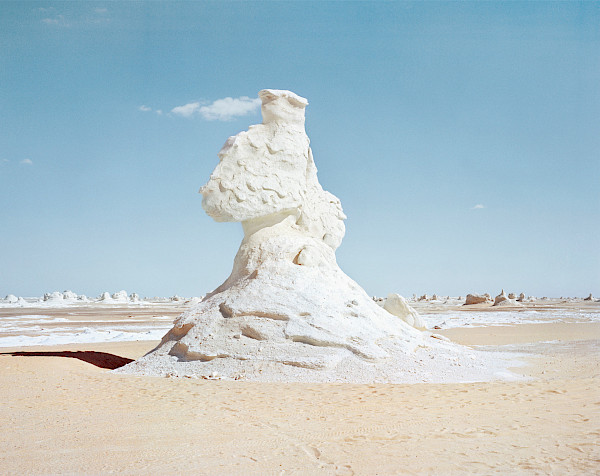
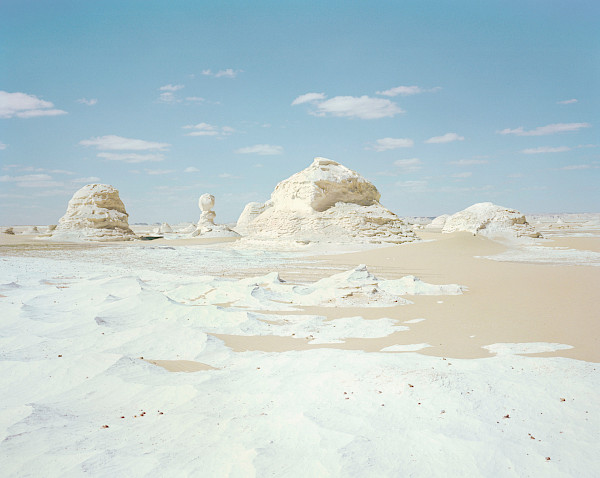
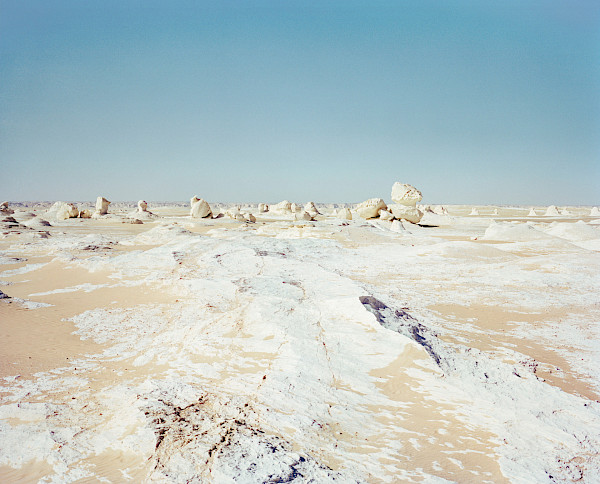
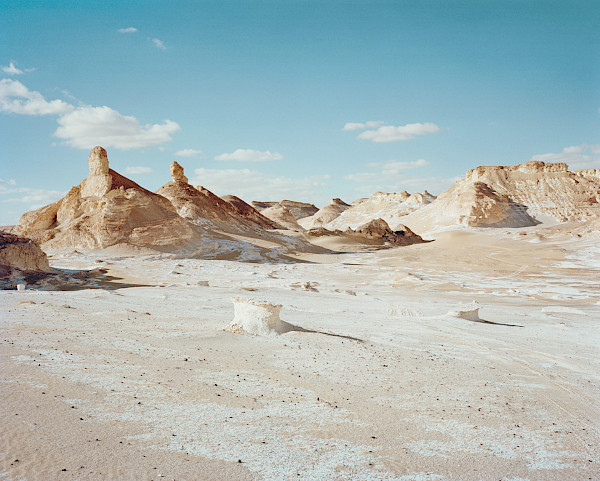
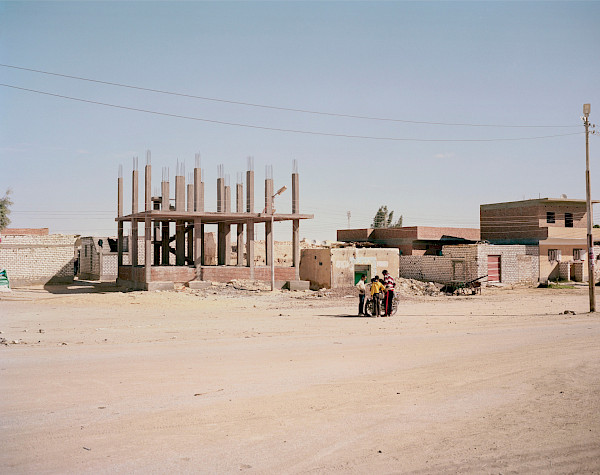

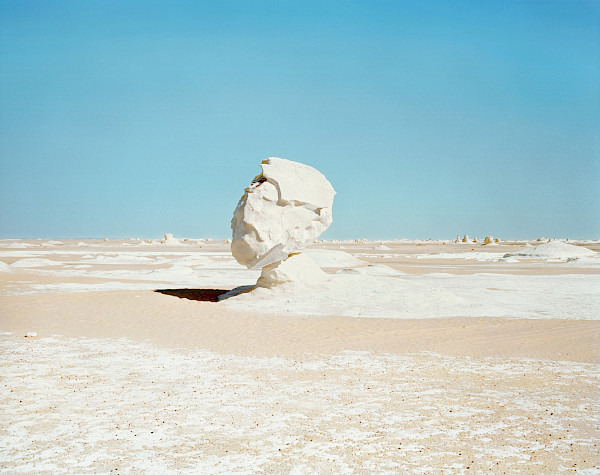
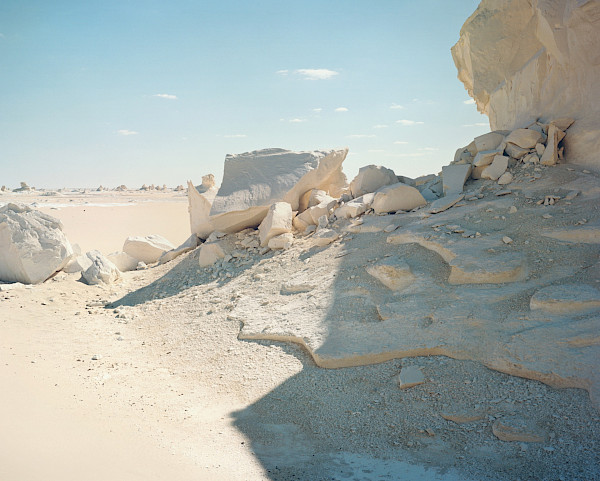

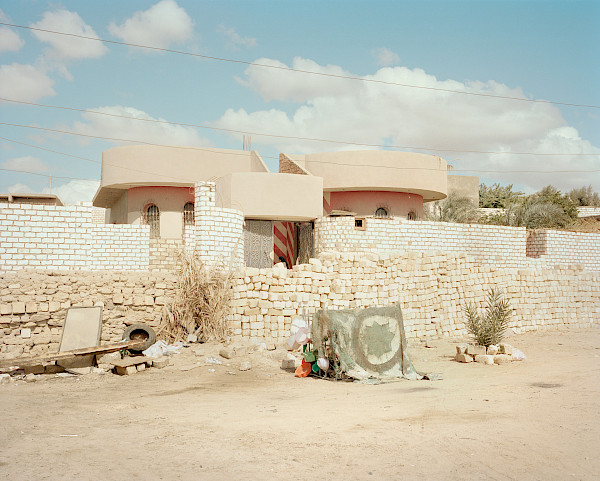
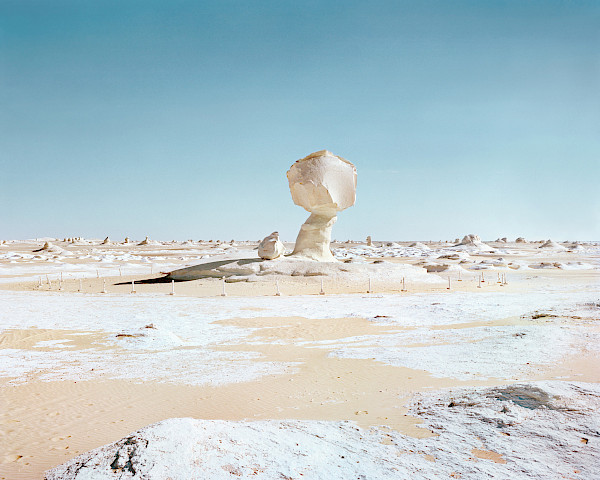

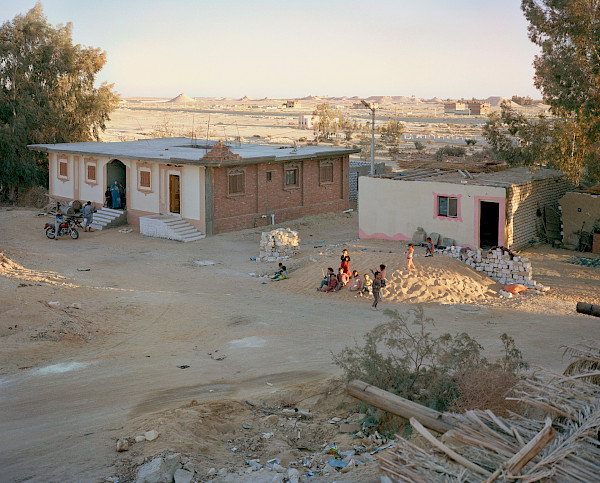
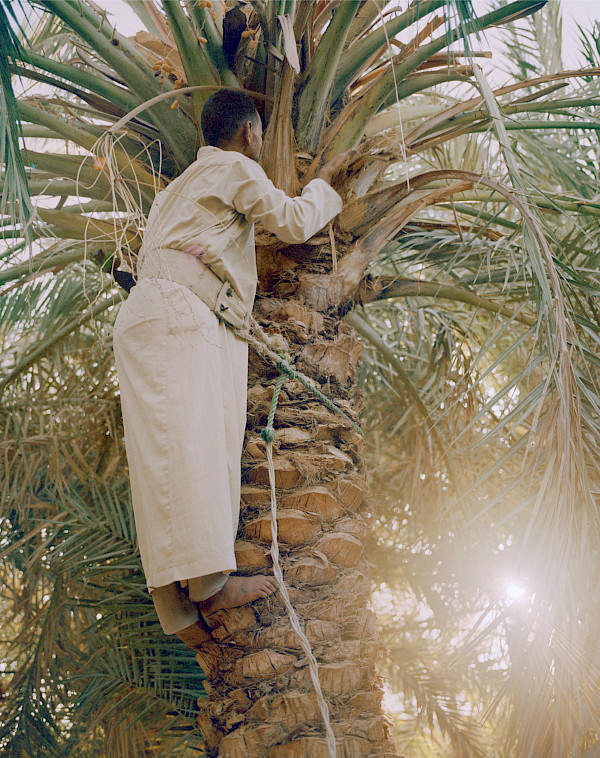
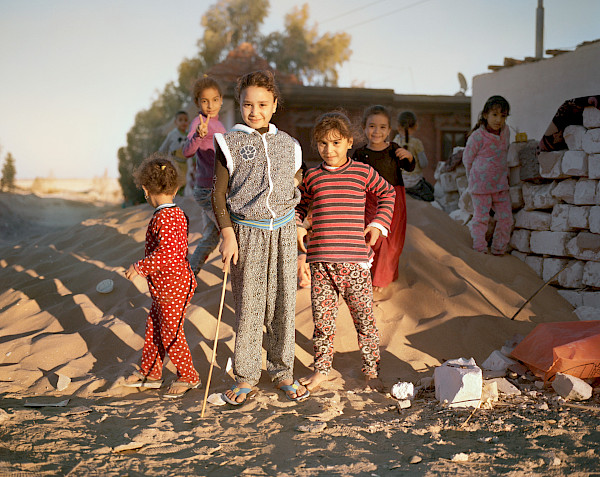
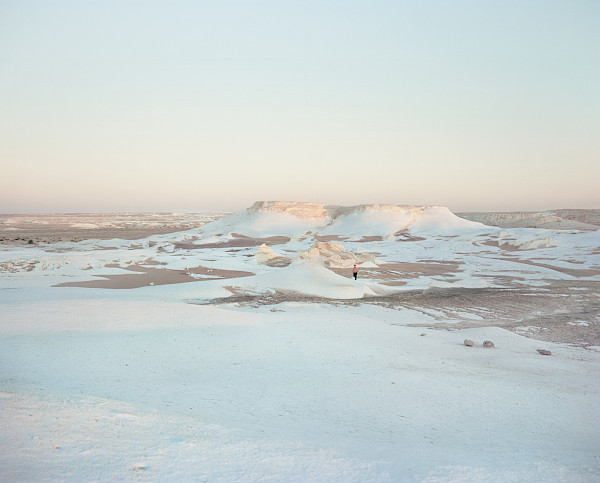
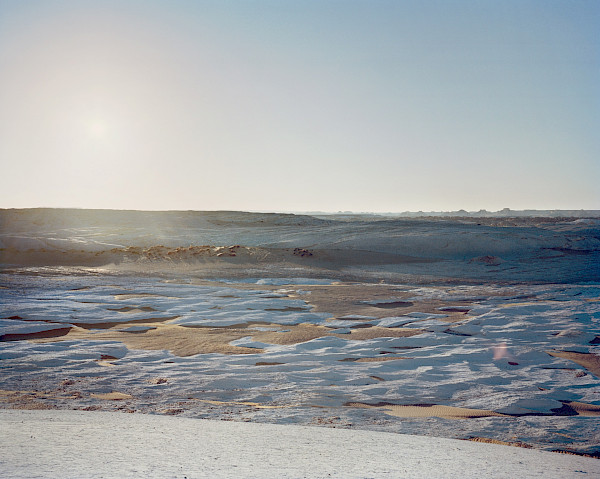
Born From Sea Foam
2021- Creative Review Photography Annual - Honourable Mention 2021
- Royal Photographic Society International Photography Exhibition 162 - Shortlist 2021
The mind-bending geology and epic history of Egypt’s White Desert is hard to comprehend today. Many thousands of years ago the land was lush and fertile. Now it’s arid, and it has been that way ever since the time of Pharaohs.
Three hundred and fifty miles southwest of Cairo, in the middle of the 263,000-square-mile depression that is Egypt’s Western Desert, is a town called Farafra. There is an oasis here and gardens large enough that every old family in the town gets its own not inconsiderable patch. Dates, olives, and lemons grow here, there has never been a time the town’s not been able to feed itself. There’s a hot spring and much talk over the years about harnessing the geothermal energy here to power the town. For now, cement cisterns sunk into the middle of a field on a patch of nowhere five minutes’ drive out of town keep the locals refreshed and the area’s few tourists entertained.
Speak Arabic to one of the five thousand or so native Farafroni, and the Egypt of the guidebooks feels far away indeed. The elder generation, especially, has a dialect so peculiar that the tens of thousands who’ve blown in here from the Nile delta (to farm a desert greened by government borehole projects) profess themselves baffled by the natives.
Farafra stands somewhat apart from the prevalent Cairo culture. How could it do otherwise? It’s not too far from the Libyan border and peopled, at its core, by Bedouin who still recall the old trade routes. More to the point, it’s old: older than Cairo; older even than five-thousand-year-old Thebes (Luxor, to you). The earliest settlements around here are more than ten thousand years old. Before Farafra, there were no settlements in Egypt – at least none that we know of. The area around Farafra is where people learned the art of staying put.
It’s an irresistibly romantic idea that outposts of greenery have persisted in what is now one of the most arid spots on earth. In colonial times European geographers, adventurers, and archaeologists staggered from one oasis to another, notebook and compass in hand, from Siwa to Kharga by Bahariya, Farafra, and Dakhla, stepping, so they reckoned, on the bones of an Eden lost under the desert dust. They weren’t wrong. A few hours’ drive southwest of Farafra, there survive, an a cave, Stone Age carvings of goats, gazelles, a giraffe, and – the clincher – a boat.
Imagining a desert underwater or in bloom is simple. The hard part is coming to terms with how long ago this region – now the White Desert National Park – dried up. This place was already desert by the time of the Pharaohs, and Farafra was no more than a stopover on the route linking the Mediterranean Sea with the Libyan Sahara. The land was ungrazed and unquarried; even the indefatigable Romans, when they occupied, managed only a few artesian wells. Yet romantic dreams of a lost Eden pertained even then – why else would the region have been dubbed Ta-iht or “land of the cow”?
The thing is, you won’t find a single cow represented among the bones petrifying here. Camels, yes, Gazelles. Ostriches. (The shells of Ostrich eggs served so well as vessels that no one thought to make pottery here.) So why should a Nile-based civilization want to remember a dry, obscure, inhospitable corner of neighboring desert as a land of plenty? Archeological work over the past quarter-century provides the answer. Civilization didn’t start by the Nile. It started here, in the wetlands around Farafra. The habit of herding and farming spread eastwards as the land dried up.
You can drive in to the White Desert, but you’d be a fool to try it without a guide; camels and a week for exploration are best. The desert is mountainous and cantilevered like solidified clouds, and, like clouds, the features are impossible to measure or even hold in mind. Twenty minutes’ ambling is enough to cross a valley floor that looks like it ought to have taken a day’s trek.
This is a landscape best walked through rather than ridden over. Impossible pinnacles turn out to be taller than dunes. Where sand and wind have carved the valley’s chalk bed as they might a glacier, you struggle to take a photograph that doesn’t look like Iceland. Turn around and wind-driven sand is pouring through gaps in the mountains, and it suddenly dawns on you that you’ve lost sight of your camp. Yes, walk, by all means, but keep your wits about you; a change in the light changes the color of everything. And nothing, absolutely nothing, in this place looks the same from two angles. This is the land that symmetry forgot.
The White Desert is white enough, or whatever color the sun makes refracting off the chalk that the lakes left behind – every possible orange, every possible mauve, at dawn some improbable Arctic blues. Dark streaks turn out to be nodules of iron from old volcanoes or the petrified remains of acacia trees. Here and there the ground is littered with fragmented stone twigs. The spindly trunks of young tamarisks remain rooted in the chalk, turned to a softish stone that you can crack between your hands.
This area has been dry for so long that its geology no longer remembers rain. There are no drainage lines, no gullies, no riverbeds, only the shores of ancient lakes, and even these are hard to spot in a landscape by now shaped entirely by wind and sand. When Mariner 9 and the Viking lander and orbiter took pictures of Mars, NASA trawled its library of satellite images of Earth to find the nearest terrestrial equivalent of what they were seeing. Find a patch of Mars on earth and you can speed up your study of Mars. Study of the White Desert informs NASA’s current mission planning.
In another part of the desert, you can stand on the floor of great lakes that once stretched well-nigh to the horizon. The chalk here has eroded almost to nothing, leaving only isolated bergs, undermined from below by wind-borne sand until they resemble giant works of superior abstract sculpture, perched on narrow pedestals. The shapes recall ruined capitols of ancient cities, enormous petrified skulls, conch shaped thrones, a sphinx (of course), also, lowering the tone somewhat, a chicken.
Among these bizarre towers, the eye and mind give way very easily, for nothing is what it appears, nothings stays the same to the eye in motion. Sounds, too, can unnerve you in this absolutely still and silent space. The march of armies fills the air as you walk among these shifting figures whose undercut bases reflect your own footsteps back at you, redoubled again and again. Elsewhere the sculptures are smaller, hardly up to the waist, and they stretch for miles like young clouds, waiting to swell and burst free of the earth. (A cute idea, but the rocks themselves around here are cute, like rockery features in some vast dead garden center.)
And back to the sand, the foot-cutting pumice, and on to the road, a two-lane where camels once trod, and home, to a town electrified in 1981 and moving with the times in it’s hospitals and schools – there’s even a university, a good one, just a bus ride away.
Returning to Farafra it is not hard to chivy an invitation to the gardens that have, for millennia, fed Farafra and given it its little trade. Any visitor taking the trouble to see how this place actually functions gets what amounts to a free pass here. (Too many tourists, poorly prepared, make one meager dash at the desert and flee.) We sat drinking tea, watching dates being harvested, nodding ruefully as our guide (also our hotel keeper, also head of an NGO, also a political campaigner, also a musician staging concerts in the desert – it’s that kind of place) explained how the earthen-built center of Farafra had by now almost vanished, untended and unoccupied, as contemporary local families embrace hot-in-summer, cold-in-winter concrete for their homes.
That will change. The idea of a town of earthen houses built along winding, shaded alleys, may look old to the locals, but to western tourists of a new breed it is a model of sustainable modernity. One day Farafra will rebuild itself into something new and strange – and not for the first time in ten thousand years.

